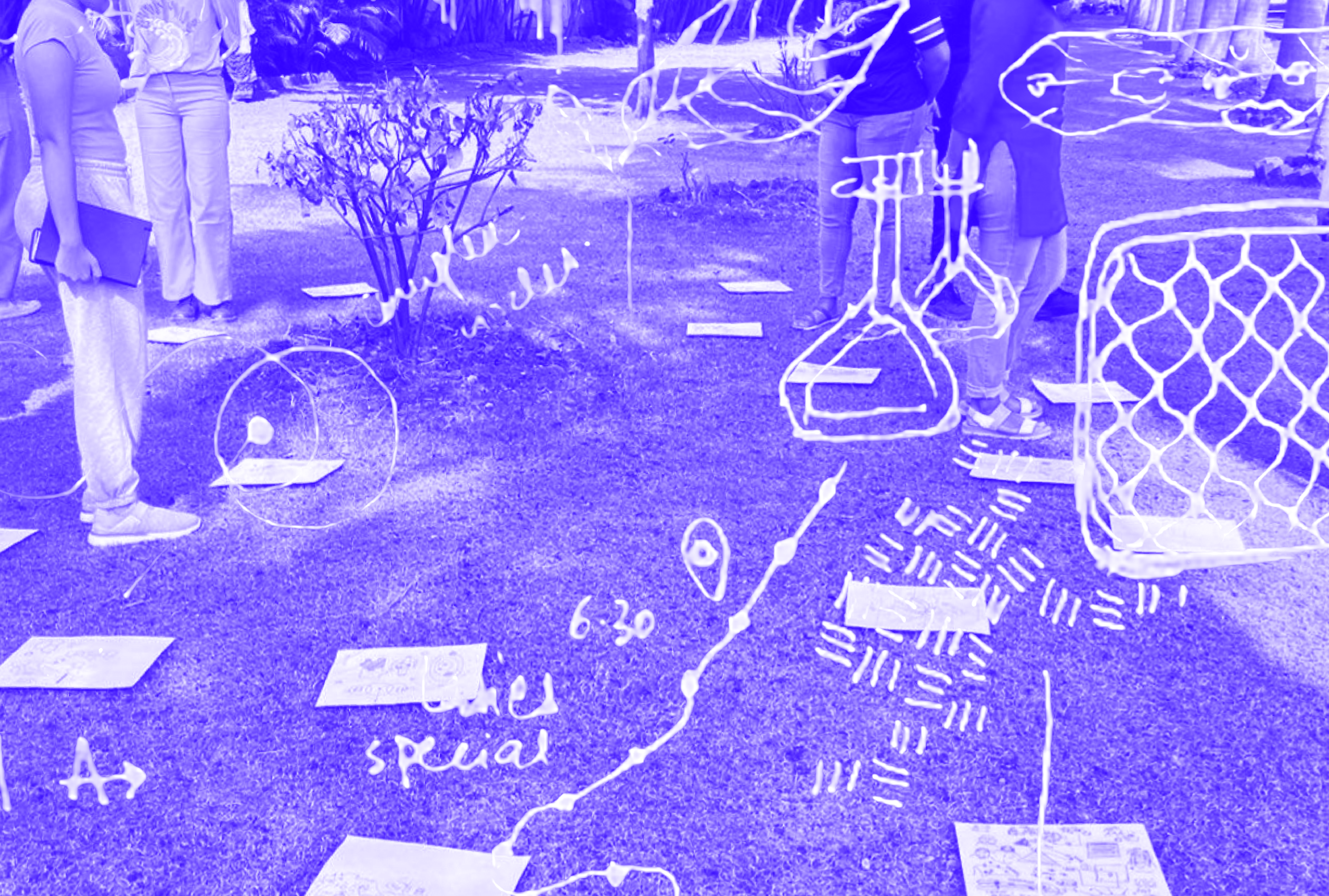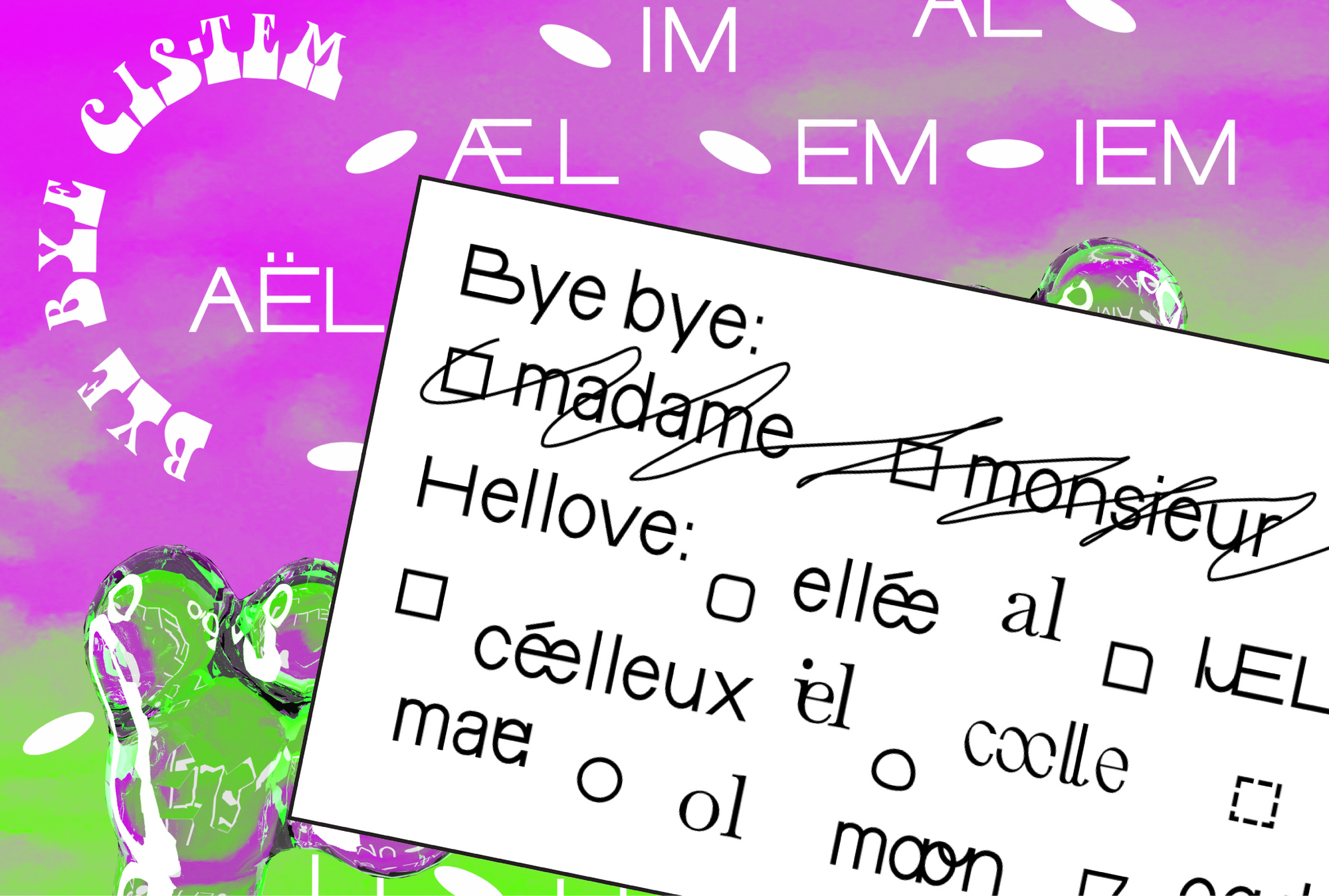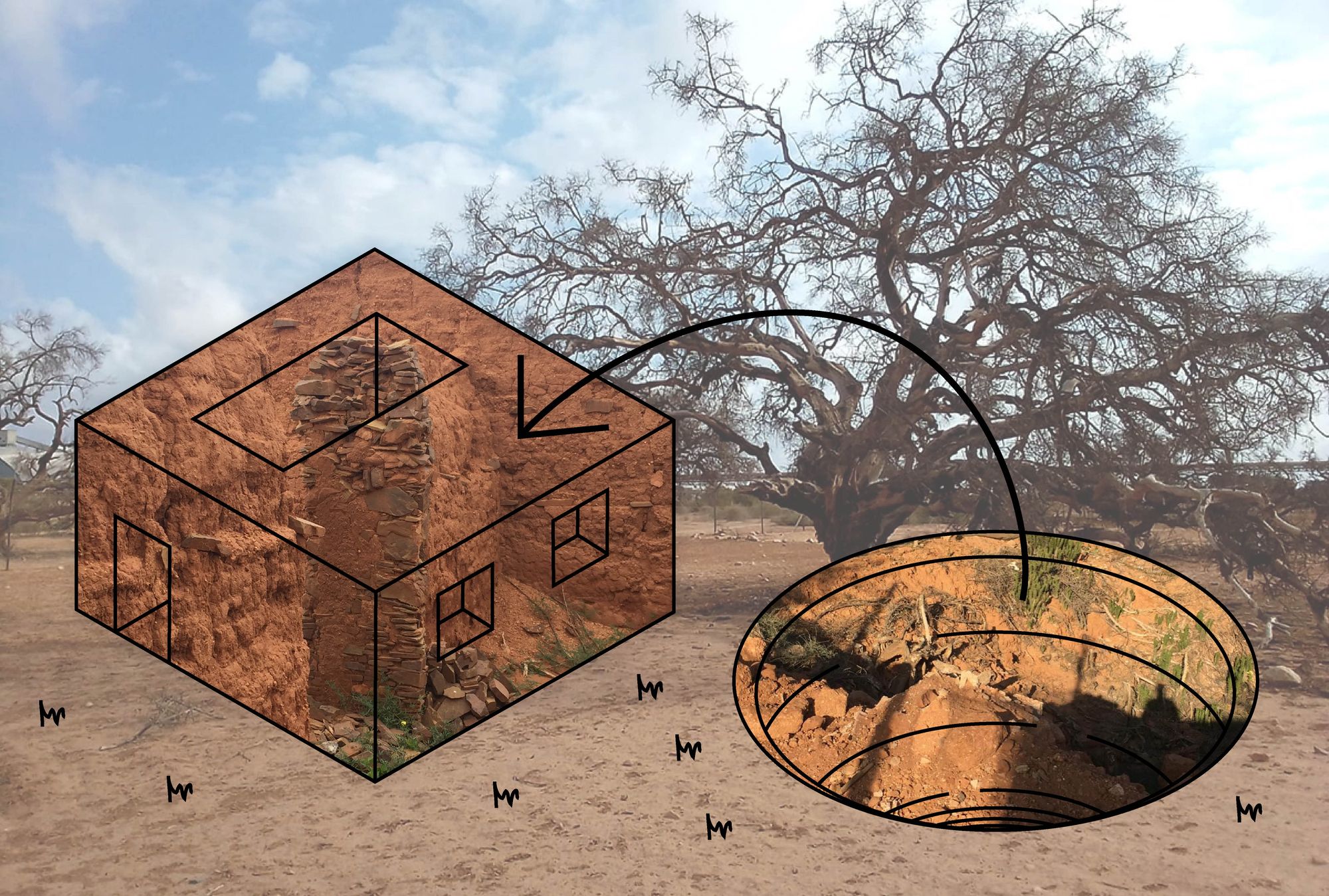
I’ve always believed that banknotes are a country’s silent business card. Not only are they a crucial part of daily interactions worldwide, but they also serve as powerful tools for shaping national identities. Their symbols carry intrinsic meanings and messages that may evoke collective histories and spark diverse emotional responses. Moreover, they reflect how a state wants to be perceived by its citizens and the rest of the world.
At a first glance of today’s Egyptian pounds (EGP), you can’t help but notice how worn they look—from the crumpled texture and pale colors to the thin layer of settled dust that has become part of the banknotes. Current EGP notes follow a strict binary model: the obverse (front) or the “Arabic side” depicts monuments relating to Islamic heritage, while the reverse (back) or the “English side” showcases iconography, monuments, and figures of ancient Egypt. This duality upon a fragile piece of paper between your fingers feels like holding a complex piece of history. In July 2022, a new design of the 10-pound note commissioned by the Central Bank of Egypt to a British company began circulating, stirring up many discussions about Egypt’s colonial past and present. What can banknotes reveal about present-day Egypt and its identity?
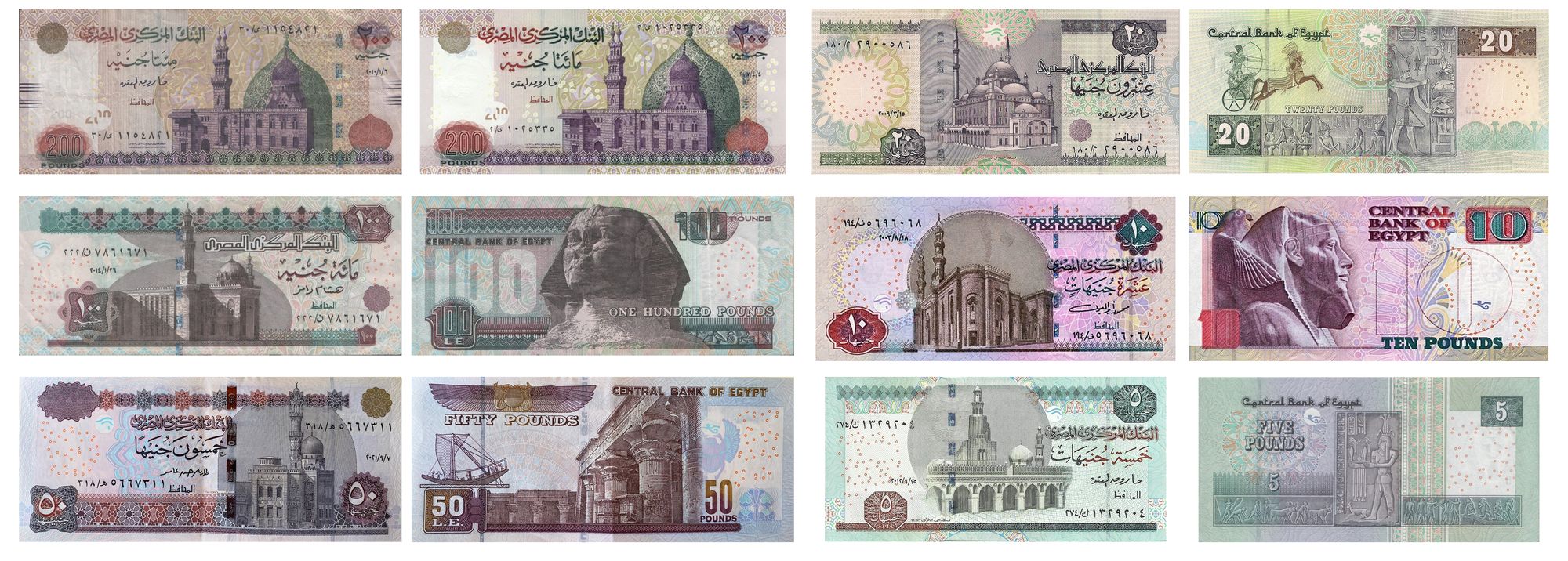
A one-pound return trip to ancient Egypt
The Egyptian pound came into existence in 1834, originally circulating as gold and silver coins. These replaced the Piastres (1 pound = 100 piastres), which was the main currency unit prior to 1834. However, Piastres kept circulating simultaneously in the denominations of 5, 10, 25 and 50 piastres as coins, and later as bills. Due to the fluctuating value of silver worldwide, in 1885, Egypt implemented the gold standard to follow the new system adopted by several of its European trade partners. It was only after the establishment of the National Bank of Egypt in 1898 that Egyptian pound banknotes started circulating; however, they were in the form of promissory notes convertible into gold within 50 years.
“By the time Egyptian pound banknotes were first released, British presence was already rooted in the country. Thus, the very name of the Egyptian currency is, in fact, a residue of colonization.”
The Egyptian pound’s Arabic name “جنيه,” pronounced geneih, does not belong to the Arabic language. It refers to Guinea, one of the countries that were the primary resource of gold for the British guinea coin. It is also referred to as “LE,” the abbreviation of livre égyptienne, French for “Egyptian pound.” From 1798 to 1801, the French occupied Egypt, which at the time was part of the Ottoman Empire. It then reverted to being exclusively under Ottoman control until 1882, when British forces assumed power. However, it was not declared part of the British Empire, and was known as a “veiled protectorate.” By the time Egyptian pound banknotes were first released, British presence was already rooted in the country. Thus, the very name of the Egyptian currency is, in fact, a residue of colonization.
The obverse of the first one-pound design featured two camels in a desert landscape. Across the top, the English words “National Bank of Egypt’’ overarch a pledge in Arabic that states: “I undertake to pay upon request the amount of one Egyptian pound to the bearer.” The numeral denomination of the bill was written in English and Arabic and placed in all four corners of the bill surrounded by ornamental detail. The reverse featured a detailed decorative design with “National Bank of Egypt” written in the middle in Arabic, along with the bill denomination in both languages. In this example, Arabic and English languages appear simultaneously on both sides of the note, and the only graphic reference to the country is a generic image of its landscape. This environmental nature—a feature shared among many territories, as opposed to something uniquely Egyptian—indicates how the formation of a vivid local identity was hindered and suppressed.

In 1914, Britain declared war on the Ottoman Empire and proclaimed a protectorate over Egypt, marking its formal occupation as the “Sultanate of Egypt.” The new government passed a special decree that made Egyptian banknotes a legal tender and no longer convertible into gold. Egyptian banknotes then began to be printed in and supplied by the British Royal Mint. The new design of the one-pound bill maintained the combined use of Arabic and English on both sides and featured abstract ornaments on its reverse. However, the transformational aspect was the replacement of the desert and camels with a depiction of the Temple of Khonsu in Karnak, an ancient Egyptian temple from 12th century B.C.E., a palm tree, and a more prominent motif along its ornamental borders. Given that Egypt was under British control, one can argue that this change was the result of the West’s Orientalist interpretation of Egyptian identity and its fascination with Ancient Egypt’s most popular symbols.

After years of public political unrest, Britain put a formal end to the protectorate and established an “independent” Kingdom of Egypt in 1922. However, the British empire retained its political influence and control over the police, the army, transportation, and communication systems. During the reign of Fuad I, the first king of the Kingdom of Egypt, the design of the banknotes carried ancient Egyptian figures and—for the first time in the history of Egyptian banknotes—Islamic cultural references and the name of its ruler. On the obverse, the one-pound bill featured the image of a statue of King Tutankhamun with both English and Arabic languages, while on the reverse, only Arabic was used, along with an image of the Al-Mansur Qalawun Mosque. The centering of Islamic iconography on the bills exhibits the aim of the newly appointed monarchy to formulate an Egyptian identity from a local perspective. This is even more highlighted by the presence of the king’s name on the bill, which marked the beginning of a personalized approach in its design.

King Fuad I reigned until his death in 1936 and was succeeded by his son Farouk I. From carrying the name of its leader, the new Egyptian pound issued in 1950 took it one step further and featured King Farouk’s portrait on its obverse and the Temple of Isis and Trajan’s Kiosk on Philae island on its reverse. This move occurred in the early years after the Second World War, during which Egypt became one of Britain’s military bases. In addition to the population’s disapproval of the corruption of the Monarchy, this led to a growing sense of discontent with both the king and Britain’s presence in the country. In an attempt to reinforce his sovereignty among Egyptians, the new banknote design sought to reassert the King’s power and restore his popularity.

However, a Coup d’etat led by Gamal Adbel Nasser and his military faction called the “Free Officers” forced King Farouk I to abdicate in favor of his son Fuad II in 1952. This substantially affected the country’s societal, political, economic, and cultural landscape. Abdel Nasser’s presidency was openly socialist, anti-imperialist, and pan-Arabist. He introduced reforms that seized the land owned by aristocrats to the benefit of small farmers, nationalized the Suez Canal and thereby freed it from British control, and formed a political alliance with Syria to form the United Arab Republic. The establishment of the Central Bank of Egypt with its own printing house ended the dependency on the British Mint to issue local banknotes.
Abdel Nasser’s systemic effort to decolonize Egypt included eradicating the figures associated with the monarchy. It was prohibited to show images of King Farouk in the state-controlled media and in the new banknotes issued in 1952. On the obverse, King Farouk’s portrait was replaced with an image of Tutankhamun, and the reverse featuring the Temple of Isis was left unchanged. Notably, this one-pound bill did not include any Islamic elements or symbols. During this critical transformative phase, refraining from associating the Egyptian identity with religion facilitated the forging of a new national identity that would resonate with all Egyptians.

In 1962, a new 50-piastre bill was issued. On the Arabic side of the note, the statue of King Chephren (a pharaoh from the 4th Dynasty) was replaced with an eagle vested with the new post-revolution Egyptian flag. While on the English side the crescent and stars that represented the monarchy were removed right after the coup in 1952. A year later, the one-pound bill incorporated an image of two mosque minarets. Islamic iconography had made a comeback.
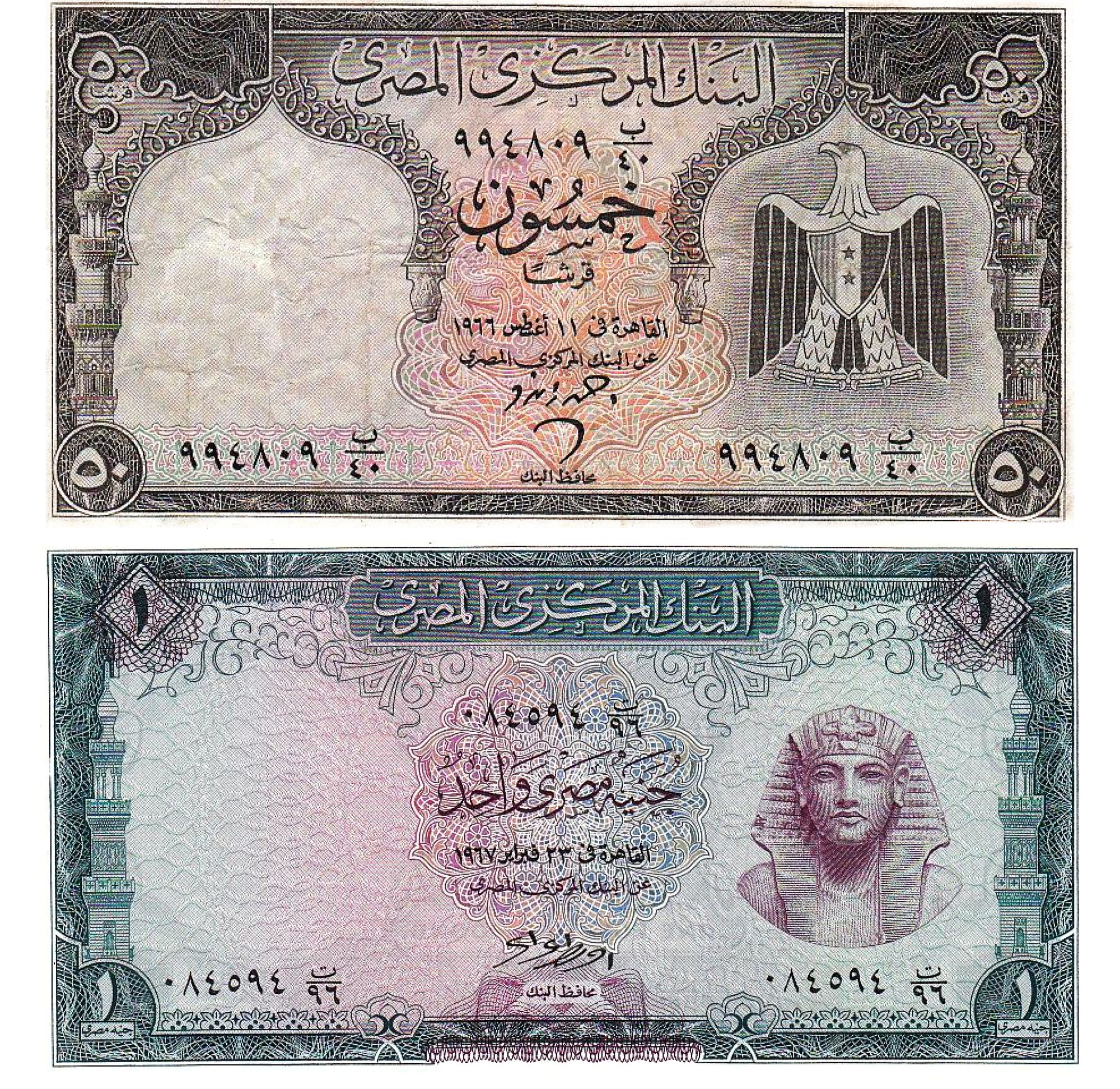
The imagery in these notes reflects Abdel Nasser’s idea of the Egyptian identity and his political agenda towards nationalism and Pan-Arabism. He saw the ancient Egyptian identity as solid and authentic enough to be endorsed nationally and freed from Imperialism. However, to break free from the colonial and imperial approach, new symbols such as the eagle were introduced to reposition and underscore the legitimacy of the Egyptian identity in light of the new republic. At the same time, the Islamic presence on the banknotes reinforced the Arab identity locally, while creating a sense of unity with other Arab countries. Since then, all Egyptian banknotes have retained this dual Egyptian/Arabic imagery of ancient Egyptian and Islamic symbols, making it the longest-lasting design since the introduction of the first banknote. What does this say about the development of Egyptian identity in recent decades and its relationship to its rich history?
Beyond the visuals
For millennia, Egyptians were under various forms of foreign occupation and control—from the First Persian Empire in the sixth century B.C., followed by the Macedonian Empire, the Roman Empire, the Byzantine, and several Muslim dynasties to the Ottoman, the French, and the British empire until 1953. Ancient Egypt’s imagery thus provides a sense of “authentic” identity because it is regarded as the only time period unhinged from any form of foreign control. But it is not only that. Ancient Egyptian civilization was remarkable in its achievements. Take the most obvious example of the pyramids, an architectural prowess that engenders an undeniable sense of collective pride.
“For millennia, Egyptians were under various forms of foreign occupation and control [...] Ancient Egypt’s imagery thus provides a sense of “authentic” identity because it is regarded as the only time period unhinged from any form of foreign control.”
As a result of the Muslim conquest in the seventh century, Egypt underwent a conversion to Islam and incorporated the Arabic language and culture that is present up to today. Religion has always been an integral aspect of Egyptian culture. Including Islamic mosques and places of worship in the banknotes reinforces the local Egyptian Arab and religious identity. This creates a broader, more collective understanding of the Egyptian identity in unity with other Arab and predominantly Islamic nations.
Arab culture is extraordinarily diverse, rich, and fluid. Interestingly, this is reflected particularly in the design of Tunisian, Saudi Arabian, and Syrian banknotes. Besides featuring historical sites like the Bosra Amphitheatre, Syrian banknotes include a more comprehensive range of their material culture than Egyptian money. This is reflected in the depiction of a clay tablet of Hurrian songs (the oldest surviving complete work of notated music), the Norias (water wheels) of the Orontes river, and Ancient roman ceramic tiles. Similarly, Tunisian banknotes include images of Berber pottery and jewelry and Carthaginian Ships. Furthermore, in 2020, Tunisia reissued its 10-dinar bill to feature Tewhida ben Sheikh, the first Muslim woman to become a physician in North Africa. Saudi Arabia’s banknotes also reflect how national identity is significantly connected with some of the country’s contemporary political figures. Such is the case of four of their bills, which feature the portrait of King Salman Bin Abdulaziz, the current King of Saudi Arabia.

Stuck in the glorious past
In August 2021, draft visuals of two newly designed Egyptian banknotes surfaced on social media, igniting heated debates. The obverse of the 10-pound and 20-pound bills featured the mosques of Muhammad Ali and Al Fattah Al Aleem, the latter constituting a huge-scale project called New Administrative Capital, a part of a governmental initiative called “Egypt Vision 2030” which has been undergoing construction since 2015. The reverse of the 10-pound bill showed showed Queen Hatshepsut along with Bibliotheca Alexandrina and a pyramid in the background, and the reverse of the 20-pound bill featured Cleopatra VII (a non-native who reigned the Ptolemaic Kingdom) with a pyramid in the background and a Pharaonic war chariot.
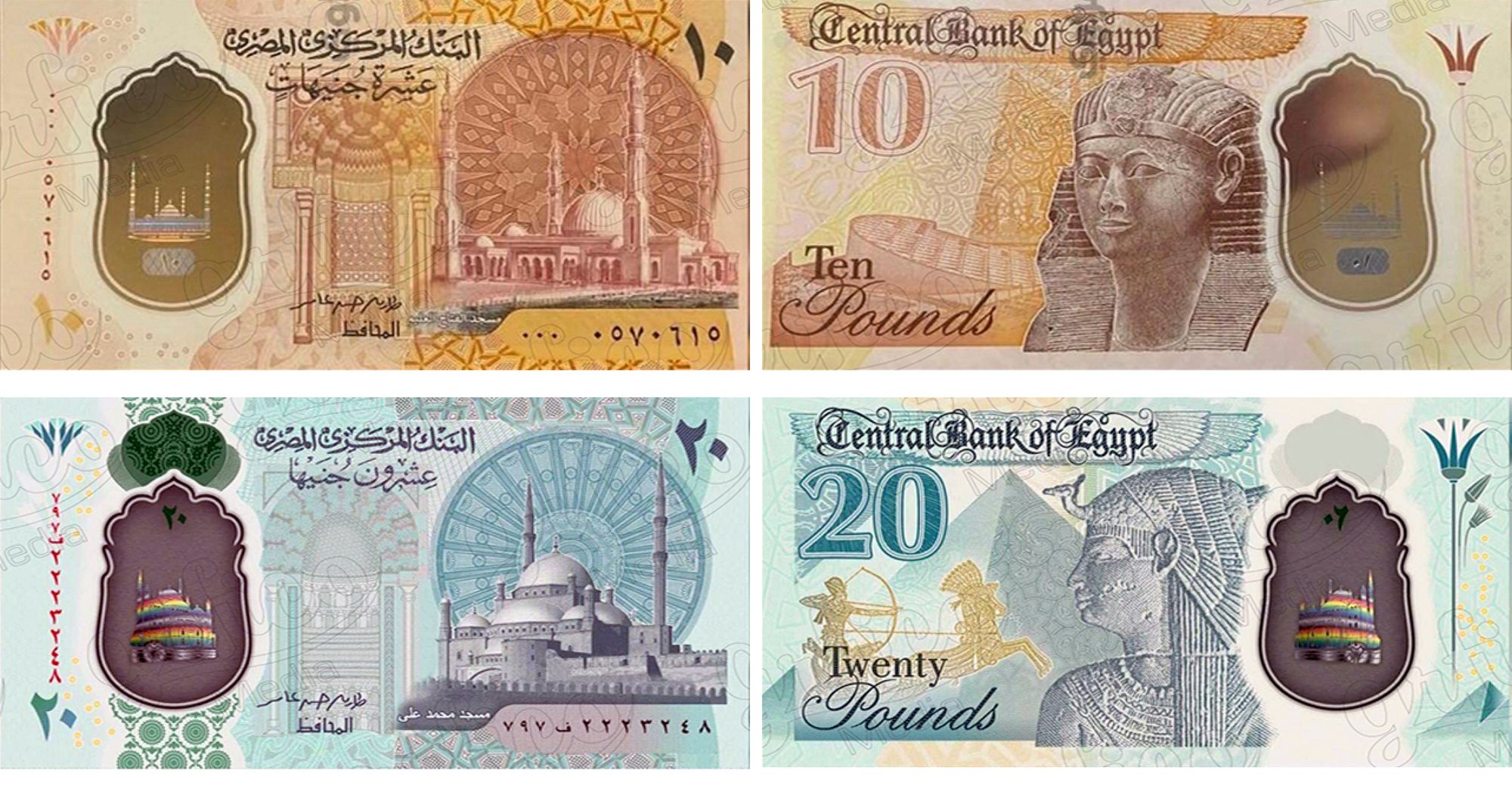
Although opinions were mixed, the general sentiment strongly disapproved of the new designs. The visual style of the bills did not change much from the previous ones, but some found it “less refined” or simply “ugly.” Others saw it as an attestation of being “stuck in time.” This was reflected in comments on Twitter and Instagram, and the sharing of images that mocked the design by replacing Queen Hatshepsut’s face with memes of “Monkey Puppet”—a Japanese children’s show character from the 1950s-1980s that is now used in popular culture to convey awkwardness or dissent.
@ramykand via Twitter: “Imagine having such an insanely rich history, that you could potentially make some of the most beautiful looking banknotes on the planet, and yet you go for intern-level graphic design drafts that are universally ugly”.
@khaledghorab via Instagram: “Backlash is good in this case. It’s feedback. Time to get back to work and focus on a design that truly reflects the past, present, and future of Egypt. Not just the past. And can we please move away from brown?”
Despite the backlash, the controversial leaked design of the 10-pound note was still released as the final design, which reveals much of the state’s ideology. This is part of a long-term approach by the Egyptian government to demonstrate an air of change towards the new republic while systematically using Ancient Egyptian heritage as a pillar of national identity. This logic was also applied to the design of new governmental buildings, for example the Supreme Constitutional Court in Cairo. The building was completed in 2000 with Pharaonic obelisks on every floor and a lotus-shaped fountain directly referencing the architectural style of the Luxor Temple. Another example is the 2020 redesign of Tahrir Square in Cairo. For this, a 3500-year-old obelisk from the time of King Ramses II was transferred from the Nile Delta to become the square’s centerpiece. In addition, four sphinxes were brought from the Karnak Temple in Luxor to surround the obelisk.

The same approach can be found in official documents like the national identification card, which features a colored illustration of the Pyramids of Giza and Sphinx. Similarly, the visual identity of national events such as the Egypt Economic Development Conference and the 27th Handball World Competition both featured the “Ankh” or key of life, an ancient Egyptian hieroglyphic symbol, in their logos.
Issuing new Egyptian banknotes could have been a chance to rethink the country’s visual and symbolic directions—one that does not necessarily dismiss its history but adds to it with contemporary aspects of Egyptian culture. Naturally, if opinion-makers systematically associate current Egyptian life and its citizens with ancient cultural references, this generates a collective sense of being stuck in the past.
I’m not against our ancient heritage being part of the Egyptian identity. However, making it its essential component overly glorifies the past and fuels a phenomenon of collective nostalgia. This, in turn, links national pride only to our past achievements despite the country’s potential. Secondly, it shields the present failures of governments and obstructs holding them accountable for the lack of solid achievements. Lastly, it reinforces the distorted colonial narratives and Western conceptions of Egypt and the Middle East at large as a country and a region in need of “progress” and “development.”
“As with many post-colonial nations, the reality is that identity lines have always been blurred—especially when trying to look for and claim what is distinctly theirs.”
As with many post-colonial nations, the reality is that identity lines have always been blurred—especially when trying to look for and claim what is distinctly theirs. Where can one find this Egypt unpolluted by colonization, unfettered by the occupation of multiple dynasties, nations, empires, and forces? Is “true” Egyptian identity anything other than fractured and almost intangible? Does it even exist?
I am conflicted. A female designer in my late twenties, Egyptian to the core yet unavoidably exposed to and immersed in Western culture, I too question my identity. The Egypt that I know and love, and the Egyptian that I am, is much more nuanced than what is communicated by the state, local mass media, or Google’s Orientalist search results. If I were to do it, I could only dare to imagine a striking collage made of thousands of disparate pieces—a bit of the old, some new, layers of the beautiful and the brutal in between, making up something genuinely mesmerizing.
Identifying the essence of an entire nation can be a futile exercise without in-depth knowledge and understanding of a country’s epistemic, historical, sociopolitical, and economic systems. But even then, why “crack” the Egyptian identity at all? To me, Egypt has always been and will continue to be an incredibly diverse, multifaceted, and shifting space impossible to capture. I believe it is less about defining a unique and everlasting Egyptian identity than about the reflections, the provocations, and the possibility of challenging one’s perception of collective or individual identity that this quest brings about. And so, I will forever be in search of an identity.
Nada Ezzeldin (she/her) is an independent Egyptian Designer who leads a hybrid, interdisciplinary and research-led design practice. She holds a Bachelor’s degree in Applied Sciences and Arts with a major in Graphic Design from the German University in Cairo. Being in a constant state of inquiry, exploration, learning and unlearning, has made her perpetually reinterpreting and reforming her design process and approach. Her body of work ranges from visual communication, identity design, digital media, art direction, to editorial and experiential design. Nada’s huge interest in the intersection of design and politics, resulted in an ongoing examination of its various themes, and specifically the topic of national identity.
Title image: A counter draft for the one-pound bill by Nada Ezzeldin. The pink color is a statement against the traditional and hegemonic Egyptian visual discourse. The plastic look of the note is a tribute to Egyptian popular culture, referencing the plastic bag as a familiar object present in almost every Egyptian household.
This text was produced as part of the Against the Grain Fellowship.




